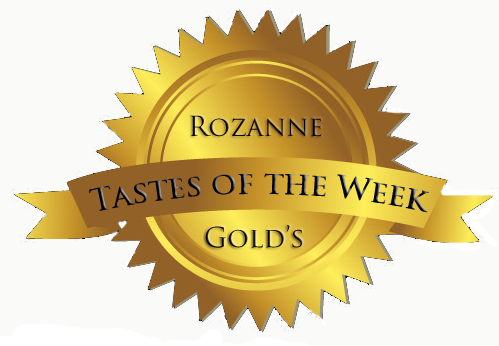 Jan. 30 through Feb. 5, 2012
Done!: Many of you may remember that when Gourmet magazine was abruptly shut down in December of 2009 there remained 3,500 books that had great value as a collection. I was in a unique position to acquire the books and donate them to New York University in honor of my mother. That collection took more than 2 years to catalogue, with funds provided by Les Dames d'Escoffier and Fales Library and Special Collections at NYU. According to Marvin Taylor, Director of Fales, "As of today (1/19/12), we have completed the cataloging of the Gourmet Libary. The total number of titles was 6,137. (Not the 3,500 we originally thought!) It turns out there were boxes and boxes of smaller pamphlets that pushed the numbers up." So proud that my mother, who inspired and nurtured me in so many ways, is "immortalized" in the cookbooks she loved so well. The collection is now available for research and posterity.
Jan. 30 through Feb. 5, 2012
Done!: Many of you may remember that when Gourmet magazine was abruptly shut down in December of 2009 there remained 3,500 books that had great value as a collection. I was in a unique position to acquire the books and donate them to New York University in honor of my mother. That collection took more than 2 years to catalogue, with funds provided by Les Dames d'Escoffier and Fales Library and Special Collections at NYU. According to Marvin Taylor, Director of Fales, "As of today (1/19/12), we have completed the cataloging of the Gourmet Libary. The total number of titles was 6,137. (Not the 3,500 we originally thought!) It turns out there were boxes and boxes of smaller pamphlets that pushed the numbers up." So proud that my mother, who inspired and nurtured me in so many ways, is "immortalized" in the cookbooks she loved so well. The collection is now available for research and posterity.
Starbucks & 1-2-3!: Beginning tomorrow (2/7/12), Starbucks is doing a promotion with my new e-book called The 1-2-3 Collection. For one week (ending 2/13/12), 900,000 "gift cards" will appear in 8,000 Starbucks for a free give-away of a fabulous recipe collection called Quick & Easy Recipes 1-2-3. The e-book, featuring 50 exclusive recipes, will be featured as the Pick of the Week.
Opening!: According to food maven, Arthur Schwartz, Starita in Naples, Italy is considered by many to be the best place for pizza in all of Italy (well, certainly Naples!) When we were there last August, we took a $30 cab ride to find it, in a rather obscure neighborhood, only to find it closed! Quite by accident on my way to see "Freud's Last Session," I stumbled upon a new (not yet opened) restaurant called Da Antonio -- which, turns out, is owned by the owners of Starita! Great surprise. It is due to open this week and is located at 309 West 50th Street. The spice man cometh!: Lior Lev Sercarz is one of the most interesting guys I've met in awhile. The Israeli-born, French-trained chef is the "artiste" behind a spice shop-cum-gallery in Hell's Kitchen where he roasts, toasts and blends hundreds of worldly spices into magical powders for famous chefs. He will also work with home cooks to develop customized blends as aromatic and personal as Cleopatra's perfume. He is incredibly knowledgeable and clearly onto a new "form" that blends the worlds of culture, craft, and cooking. His store, La Boite, is located at 724 11th Avenue (bet. 51st and 52nd streets). It is open for viewing, sniffing, consultations and chatting (spice therapy as he called it) from Wednesday through Friday, from 3 to 7 p.m. Lior spent years in the kitchen of Daniel Boulud and studied under storied chefs in Belgium and France. Louise McCready in Nomad Editions wrote a wonderful, in-depth article about him which I know you will enjoy. I look forward to spending more time with Lior -- the genial Willy Wonka of the spice & biscuit trade.
Great food & it's Kosher!: Azuri Cafe on West 51st street has an interesting pedigree. Considered a bit of a dump, with only 12 rather rickety seats, it has a "26" rating in Zagat -- only 1 point less than Babbo! I was determined to try it. It is very, very good -- delicious, fun, unexpected. The owner, who has a reputation for surliness, is actually very charming and nice. Born in Israel, his food is authentic and so tasty. Generous portions and great homemade green hot sauce! Recommendations: Fried cauliflower to begin, bourekas with tahina and hot sauce, a fabulous over-stuffed chicken schwarma pita, and a overflowing platter of ground meat kebab, accompanied by salad, hummus and excellent babaganoush. Many thanks to my friend Steve North who took me there for a rather belated birthday celebration.
A totally new taste!: My first taste of oyster leaf, experienced last week at the world-class Diva at the Met in Vancouver, was startling. Not unlike my first nibble at a fresh shiso leaf, the oyster leaf tastes not only like oysters but like a sip of fresh ocean water to the 10th degree. Oh my gosh. Supposedly these leaves, which look a bit like spinach, made their first appearance at El Bulli in San Sebastian. The verdant leaves, salty as the sea, absorb the salt from the soil to prevent them from freezing. Generally grown in Europe, they will soon pop up on more and more menus in America. Not only a prediction, but a wish.
Tomorrow!: View the entire menu (with wine pairings) from my remarkable dinner at Diva, and enjoy some snapshots of the "tastes of the week."

